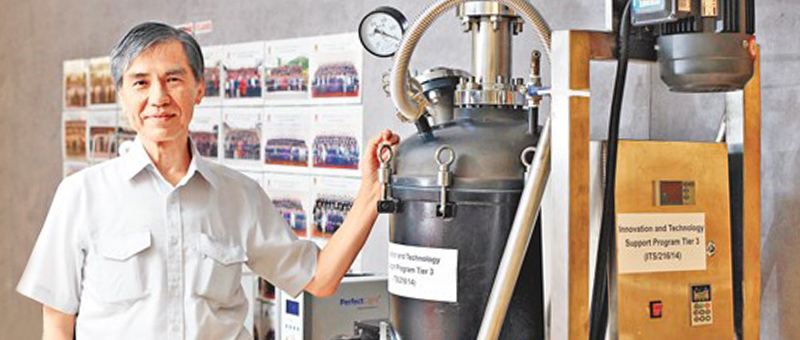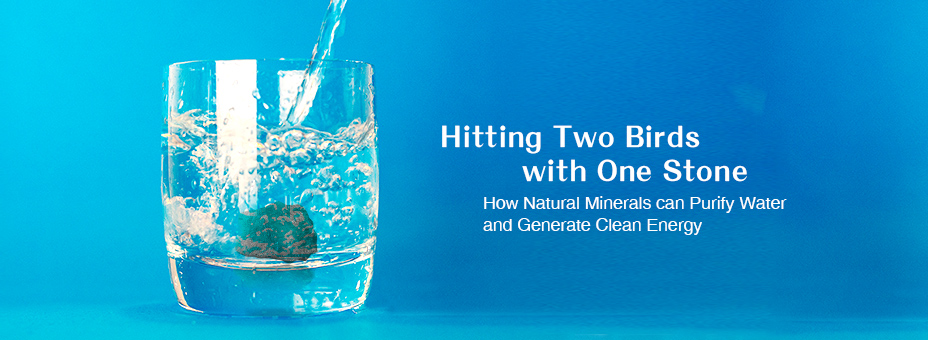
Prof. Wong Po-keung
School of Life Sciences
Associate Director of the Environmental Science Programme
Naturally occurring semiconductor minerals, such as sphalerite and pyrite, can perform visible-light-driven (VLD) photocatalysis to degrade toxic organics and inactivate infectious bacteria in water. The application of natural minerals in water purification has attracted increasing attention.
Natural minerals are naturally occurring solid chemical substances, which have characteristic chemical composition and are formed through biogeochemical processes. A natural mineral consists of a main component and traces of other metallic elements. These metallic elements and complicated crystal lattice defects in the mineral could induce VLD photocatalytic activity.
Compared with frequently reported synthetic VLD photocatalysts that are tedious in fabrication procedure and expensive for mass production, natural materials are readily obtainable in large quantity at lower cost. Some of them contain iron which makes the natural minerals visible-light (VL) active, and even more importantly makes them magnetic and thus easier for recycle and reuse in large-scale operation.
The well-studied natural magnetic minerals include natural magnetic sphalerite (NSM), natural pyrite (NP) and vanadium-titanomagentite (VTM). The separation of these natural magnetic minerals after photocatalytic treatment can be easily achieved by applying an external magnetic field. The good performance of photocatalytic activity makes natural minerals and natural magnetic minerals good candidates for cost-effective VLD photocatalytic degradation of toxic organics and for inactivation of the infectious microorganisms in water and wastewater samples.
The use of natural minerals for photocatalytic water purification first began in 1995. Professors Anhuai Lu and Yan Li of Peking University had spent years to screen over 50 kinds of naturally occurring semiconducting metal oxides and metal sulphide minerals to obtain a few natural minerals that possess good VLD photocatalytic organics degradation ability. In 1995, the CUHK team began to collaborate with the Peking University team to study the potential of using natural minerals for water purification. The Peking University team focused on degradation of toxic inorganics and organics, while the CUHK team on the photocatalytic disinfection of bacteria by selected natural minerals.
Figure 1 shows the details of photocatalytic disinfection: once natural photocatalyst is irradiated by visible light, various generated reactive species will react with the bacteria to inactivate or kill them. The same mechanism can be used to degrade toxic organics in water.
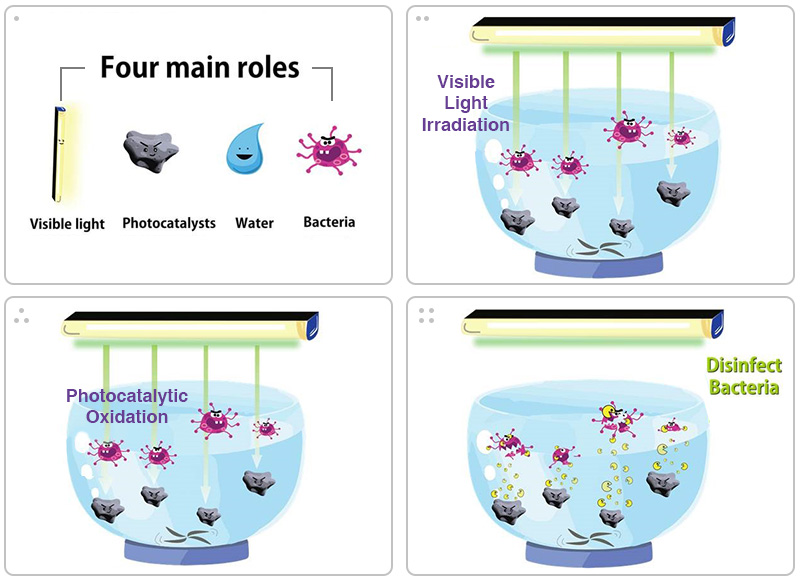
With support from the Innovation and Technology Commission (ITC) of the Hong Kong SAR Government, the CUHK research team designed and built a five-litre and a 100-litre photocatalytic reactor that can be used for photocatalytic disinfection (Figure 2).
Photocatalytic hydrogen production has also been well documented. Since hydrogen is the cleanest alternative energy source, the CUHK research team, under the auspices of ITC, built another 100-litre photocatalytic reactor for an integrated photocatalytic system for simultaneous dye degradation and hydrogen production in water and wastewater samples (Figure 3).
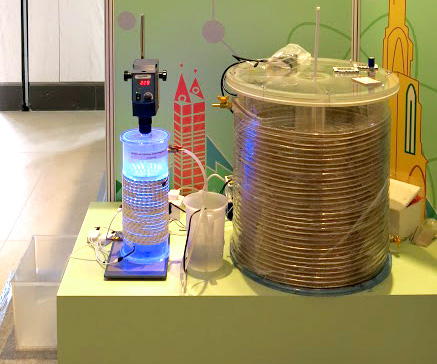
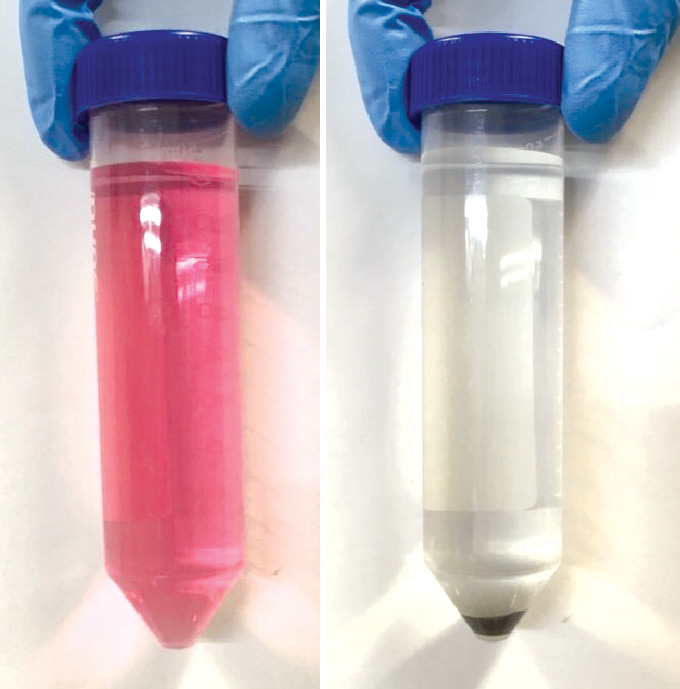
The encouraging results of the project indicate it is feasible to degrade certain organics in wastewater samples and at the same time, to generate valuable energy sources. This approach makes the photocatalytic water purification system sustainable.
In the next few years, the CUHK research team will focus on further improving the photocatalytic devices for bacterial disinfection, and for integrated dye degradation and hydrogen production. The goal is to turn these results of studies into marketable products.
